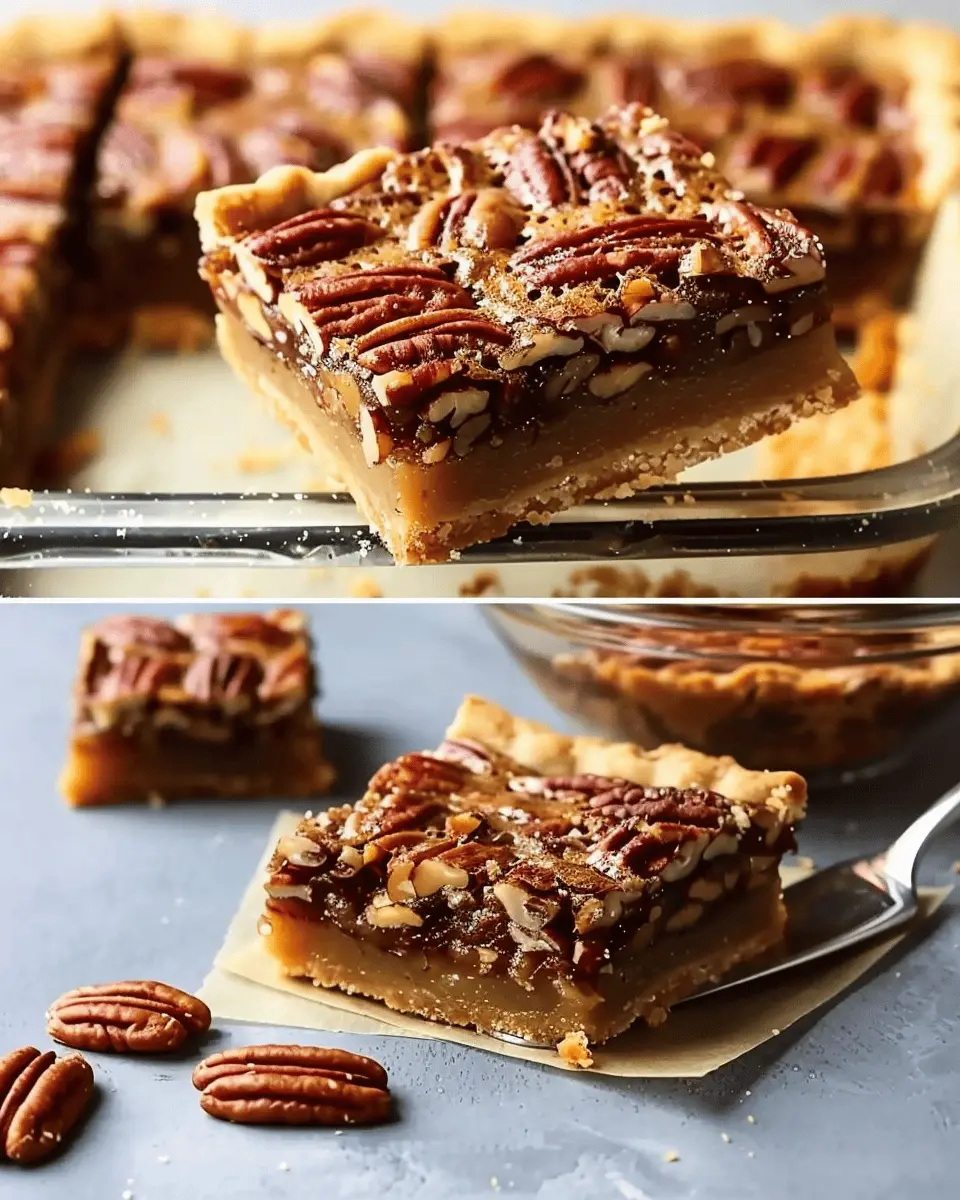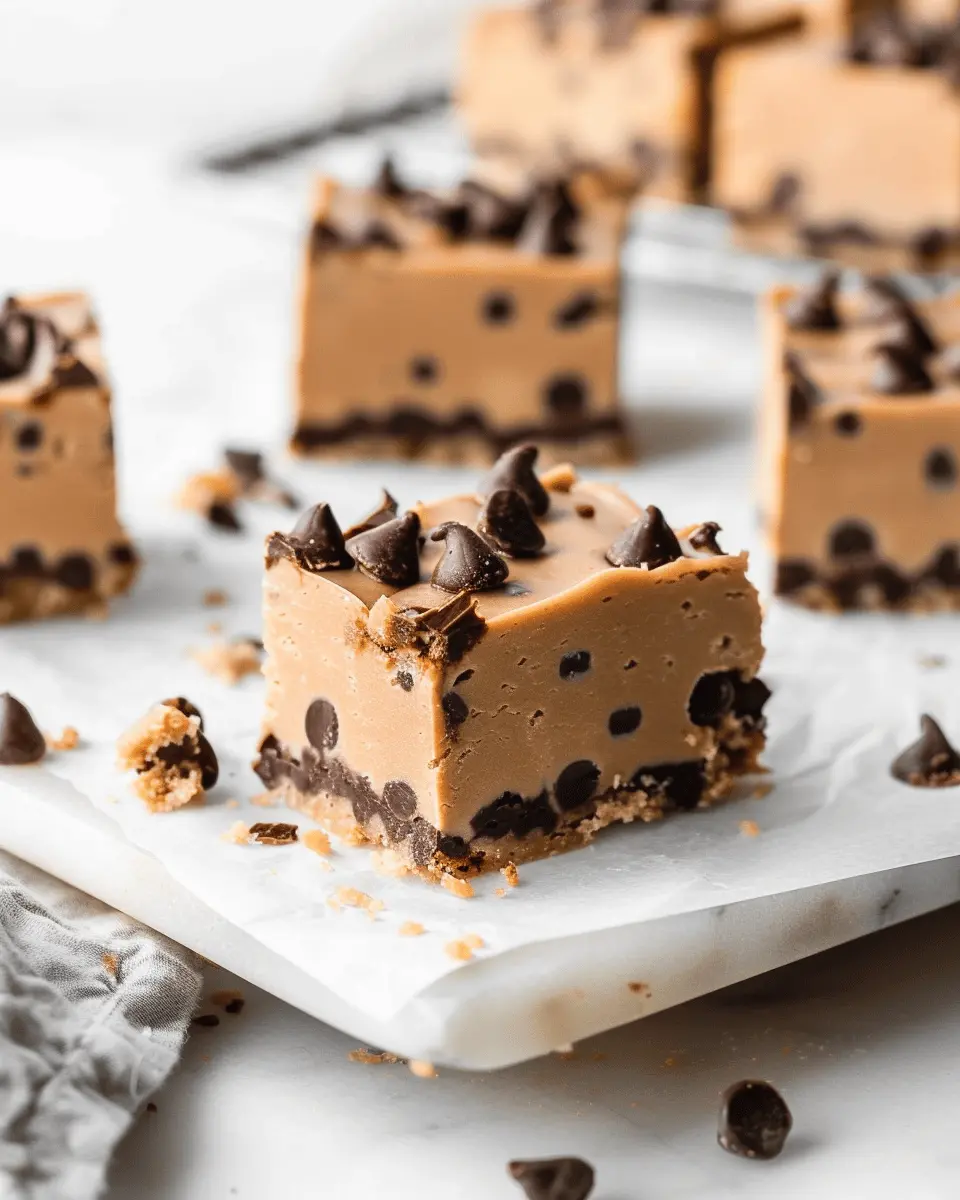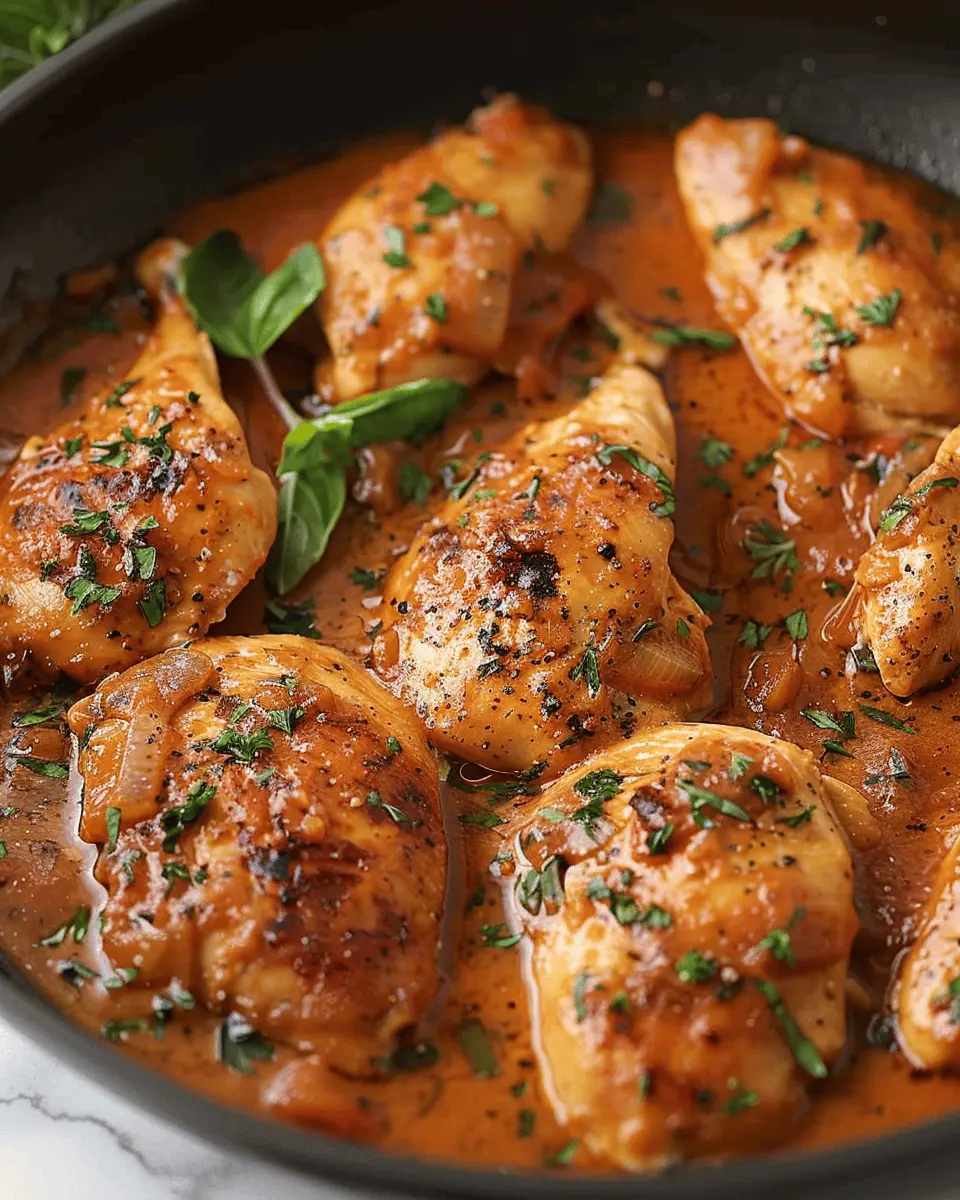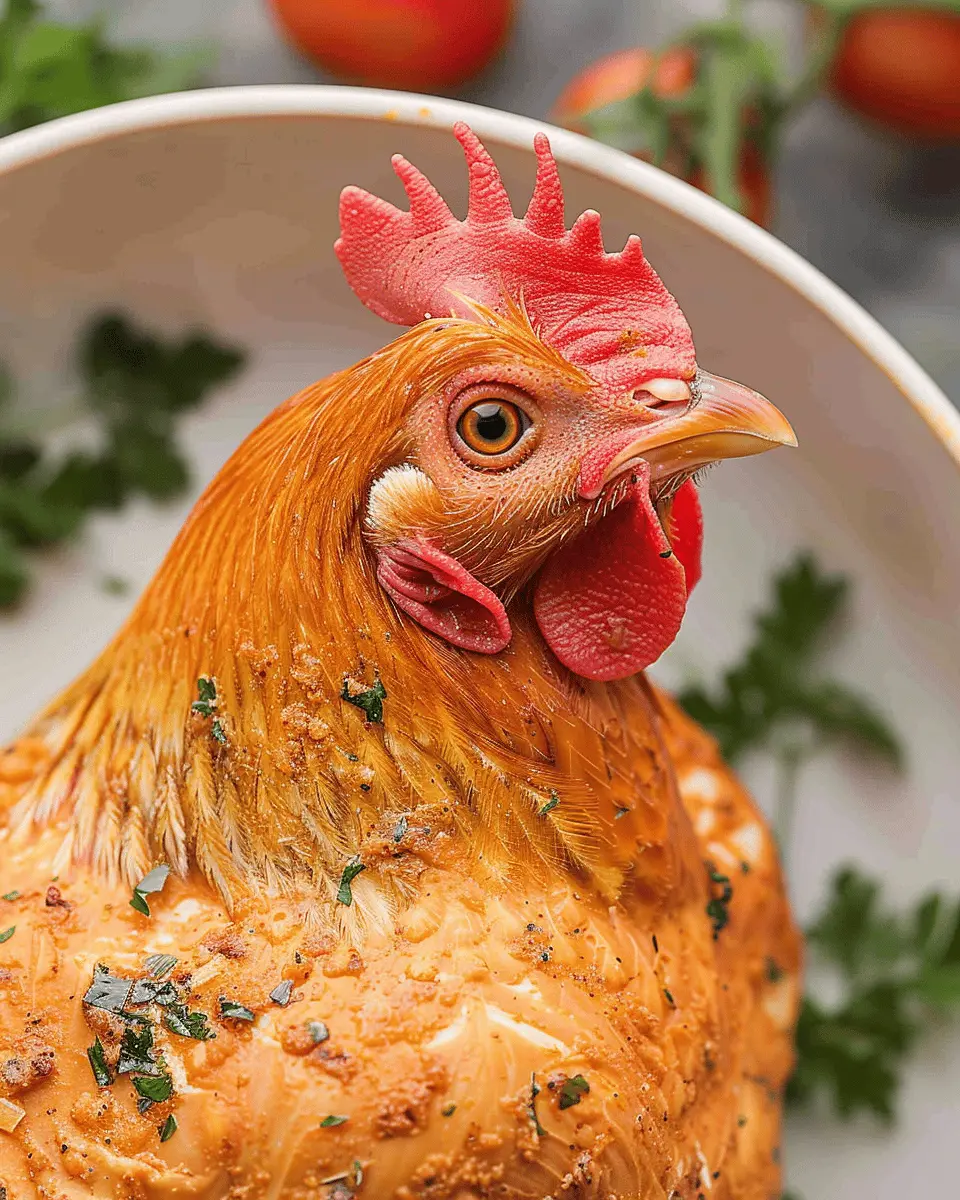Introduction to Pan-Seared Halibut
When it comes to selecting a dish that’s not just tasty but also elegant, pan-seared halibut tops the list. This moist, flaky fish has a mild flavor that can easily complement a variety of seasoning and sides, making it perfect for both casual dinners and special occasions. Halibut, known for its firm texture and impressive nutritional profile—rich in omega-3 fatty acids and protein—offers a delectable way to enjoy seafood without feeling weighed down.
Why Choose Pan-Seared Halibut for Your Next Meal?
If you’re on the hunt for something that’s both nutritious and sophisticated, pan-seared halibut should be your go-to choice. Here are a few reasons why this dish deserves a spot on your dinner table:
-
Light yet Satisfying: Halibut is a lean source of protein, which makes it perfect for health-conscious diners. Pair it with roasted veggies or a fresh green salad, and you’ve got a guilt-free meal that’s still incredibly satisfying.
-
Quick Cooking Time: One of the best aspects of pan-seared halibut is how quickly it cooks—typically under 15 minutes! Busy professionals will appreciate a nutritious meal that doesn’t require extensive preparation or long hours at the stove.
-
Flavor Versatility: Whether you season it with zesty lemon and herbs, or perhaps a sprinkle of garlic and capers, halibut adapts beautifully. This versatility means you can tailor the flavors to match your mood or any ingredients you have on hand.
-
Impressive Presentation: It’s hard to deny how beautiful a perfectly seared piece of halibut looks on a plate. A golden crust with a succulent interior makes it an impressive option for entertaining guests or a romantic dinner date.
For more information on the nutritional benefits of halibut, you can explore resources from the American Heart Association or the Seafood Nutrition Partnership.
So, are you ready to elevate your culinary repertoire? Let’s dive into this easy and delicious recipe for pan-seared halibut with capers and dill!
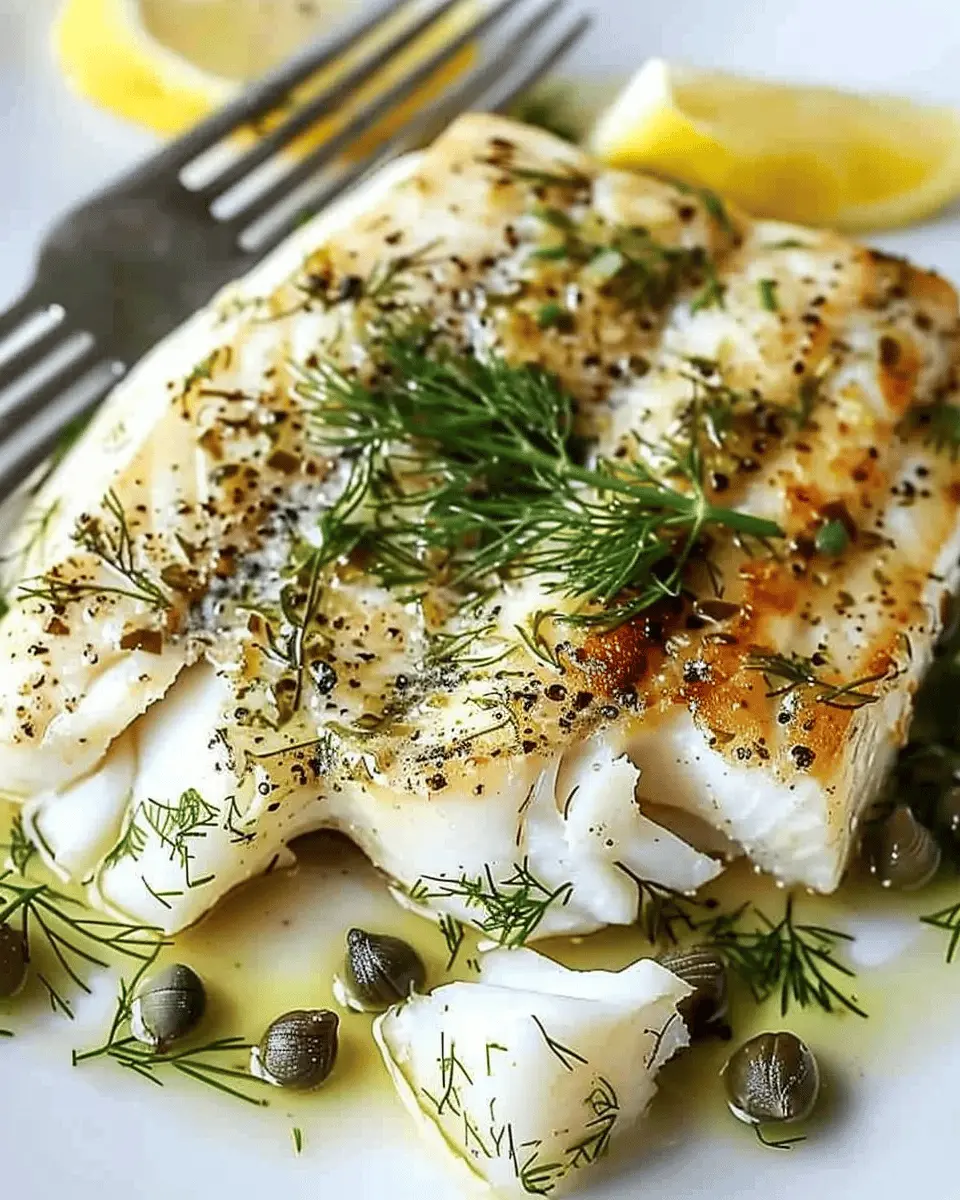
Ingredients for Pan-Seared Halibut
If you’re craving a delicious and healthy meal, pan-seared halibut is a fantastic choice! This dish brings together simple ingredients to create a culinary delight. Let’s dive into what you’ll need for this recipe:
-
Fresh Halibut Fillets: Aim for about 6 ounces per serving. Freshness is key—look for clean, firm fish.
-
Olive Oil: About 2 tablespoons are perfect for a golden crust.
-
Butter: Use 2 tablespoons for a rich, buttery flavor that enhances the halibut.
-
Garlic: One or two cloves, minced, will add aromatic depth to your dish.
-
Capers: A couple of tablespoons for that briny zing.
-
Fresh Dill: Roughly 2 tablespoons of chopped dill will brighten up the dish.
-
Lemon: A quarter, juiced, adds a refreshing hint of acidity.
-
Salt and Pepper: To taste, for seasoning your halibut to perfection.
These ingredients work beautifully together, bringing out the delicate flavor of halibut while providing a delightful contrast with the capers and dill. For more culinary inspiration, check out this resource on cooking fish to take your skills to the next level!
Preparing Pan-Seared Halibut
Pan-seared halibut is a delightful dish that’s both simple and sophisticated, perfect for impressing guests or just indulging in a gourmet experience at home. Let’s navigate through the preparation of this dish, ensuring that each step enhances the natural flavors of the halibut while keeping it tender and juicy.
Get Your Halibut Ready
Before diving into cooking, it’s essential to ensure that your halibut fillets are properly prepared. Fresh halibut is preferred, but frozen can work in a pinch. If you’re using frozen fillets, be sure to thaw them in the refrigerator for a few hours or overnight—this helps maintain texture.
- Trim the Fillets: If your halibut fillets have skin, you can choose to leave it on or carefully remove it with a sharp knife. Skin-on fillets will create a crispy texture but may require additional cooking time.
- Pat Dry: Always blot your fillets with paper towels. Removing excess moisture ensures they sear instead of steam, which is critical for achieving that golden crust.
Ready to proceed? Excellent!
Seasoning the Fillets
Seasoning is where the magic begins, allowing the natural flavor of the fish to shine through. A simple yet effective seasoning can elevate your pan-seared halibut to gourmet status.
- Salt and Pepper: Start with a generous sprinkle of kosher salt and freshly cracked black pepper on both sides. This basic combination enhances the halibut’s flavor.
- Add Some Zest: Consider mixing in a hint of lemon zest or garlic powder for added depth.
Personal tip: experiment with different seasoning blends based on your cooking style. This can be as simple as adding herbs de Provence or a pinch of smoked paprika to incorporate a unique flare.
Searing to Perfection
Now comes the fun part—sizzling your halibut to golden-brown perfection!
- Preheat Your Pan: Using a non-stick skillet or cast iron pan, heat a tablespoon of oil over medium-high heat until it shimmers. Olive oil is a great choice, but feel free to use butter or a blend for even more flavor.
- Sear the Fillets: Gently place the fillets into the hot pan, being careful not to overcrowd them. Sear for about 3-4 minutes without moving them. This patience allows for that beautiful crust to form.
Remember, optimal temperature is key! You want to hear a satisfying sizzle but not a furious roar—the goal is to create a crispy exterior while keeping the inside tender.
Adding Flavor with Capers and Dill
While your halibut sizzles away, it’s time to introduce the star-studded duo of capers and dill.
- Flavor Boost: Once the halibut has cooked on one side, flip it and scatter a tablespoon of capers and a handful of fresh dill over the fillets. The briny capers and aromatic dill complement the richness of the halibut beautifully.
- Finish Cooking: Allow the fish to cook for another 2-3 minutes, allowing the flavors to meld.
This is where the dish starts to awaken; the delightful aroma of capers and dill permeates your kitchen, making you eager to dig in!
Ensuring Perfect Doneness
Cooking fish to the right temperature is crucial for a safe and delicious meal.
- Check the Temperature: The FDA recommends that fish be cooked to an internal temperature of 145°F (63°C). A simple fish thermometer can be your best friend here.
- Visual Cues: Halibut should be opaque and flake easily with a fork when done. If it still looks translucent in the center, give it a little more time.
When you achieve the perfect doneness, plate it up with your favorite sides—perhaps a vibrant salad or roasted vegetables. This pan-seared halibut recipe is sure to impress, embodying convenience without sacrificing flavor.
For more cooking tips and techniques on how to enhance your culinary skills, feel free to check out Serious Eats or America’s Test Kitchen. Happy cooking!
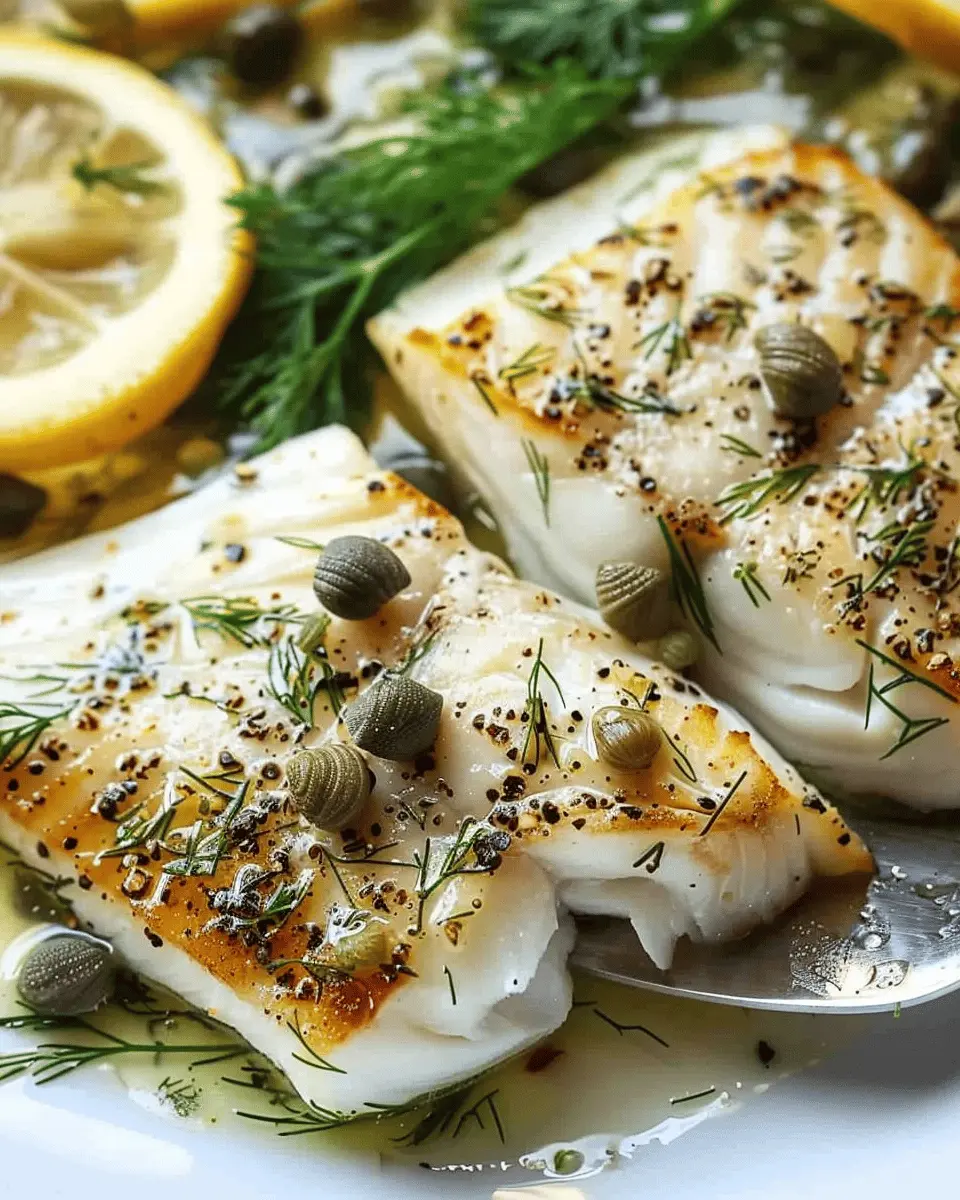
Variations on Pan-Seared Halibut
Pan-Seared Halibut with Lemon Butter Sauce
If you’re looking to enhance your pan-seared halibut, consider pairing it with a zesty lemon butter sauce. This quick sauce elevates the dish and adds a splash of flavor that’s both bright and rich. Simply melt butter in a skillet, add freshly squeezed lemon juice, and whisk until combined. For a unique twist, toss in some minced garlic or finely diced shallots. Drizzle the sauce over your halibut just before serving for an instant flavor upgrade that’s sure to impress guests or elevate a weeknight meal.
Mediterranean-Inspired Pan-Seared Halibut
For a taste of the Mediterranean, you can transform your pan-seared halibut with bold ingredients. Picture this: a medley of olives, sun-dried tomatoes, and artichoke hearts sautéed together to create a vibrant topping. Season these veggies with oregano and a touch of crushed red pepper flakes to pack a flavorful punch. Serve your halibut on a bed of quinoa or couscous for a delightful, wholesome meal. If you want a bit more indulgence, drizzle a tahini sauce on top for extra creaminess and depth.
You can explore more about the health benefits of halibut from the USDA, which highlights its high protein content and low-fat profile. These variations not only showcase the versatility of pan-seared halibut but also allow you to experiment with flavors while keeping your meals exciting and delicious. What’s your favorite way to prepare halibut?
Cooking Tips and Notes for Pan-Seared Halibut
The Importance of Fresh Ingredients
When it comes to cooking pan-seared halibut, starting with the freshest ingredients is essential. Fresh fish not only tastes better but also has a firmer texture that holds up beautifully during cooking. Visit your local fish market or reputable grocery store to select halibut that looks moist and has a mild ocean scent. If you’re not sure what to look for, check out resources like Seafood Watch for tips on sourcing sustainable and fresh seafood.
Tips for Achieving Crispy Skin
For that perfect crispy skin on your pan-seared halibut, follow these helpful tips:
- Pat Dry: Make sure to pat the halibut fillets dry with paper towels. This helps achieve that coveted crispy texture.
- High Heat: Preheat your skillet on medium-high heat with a splash of oil. A hot pan will sear the fish quickly, locking in those delicious flavors.
- Don’t Overcrowd: Cook in batches if necessary. Crowding the pan can lower the temperature and lead to steaming instead of searing.
With these tips in hand, you’ll be well on your way to mastering a delicious pan-seared halibut dish that impresses!
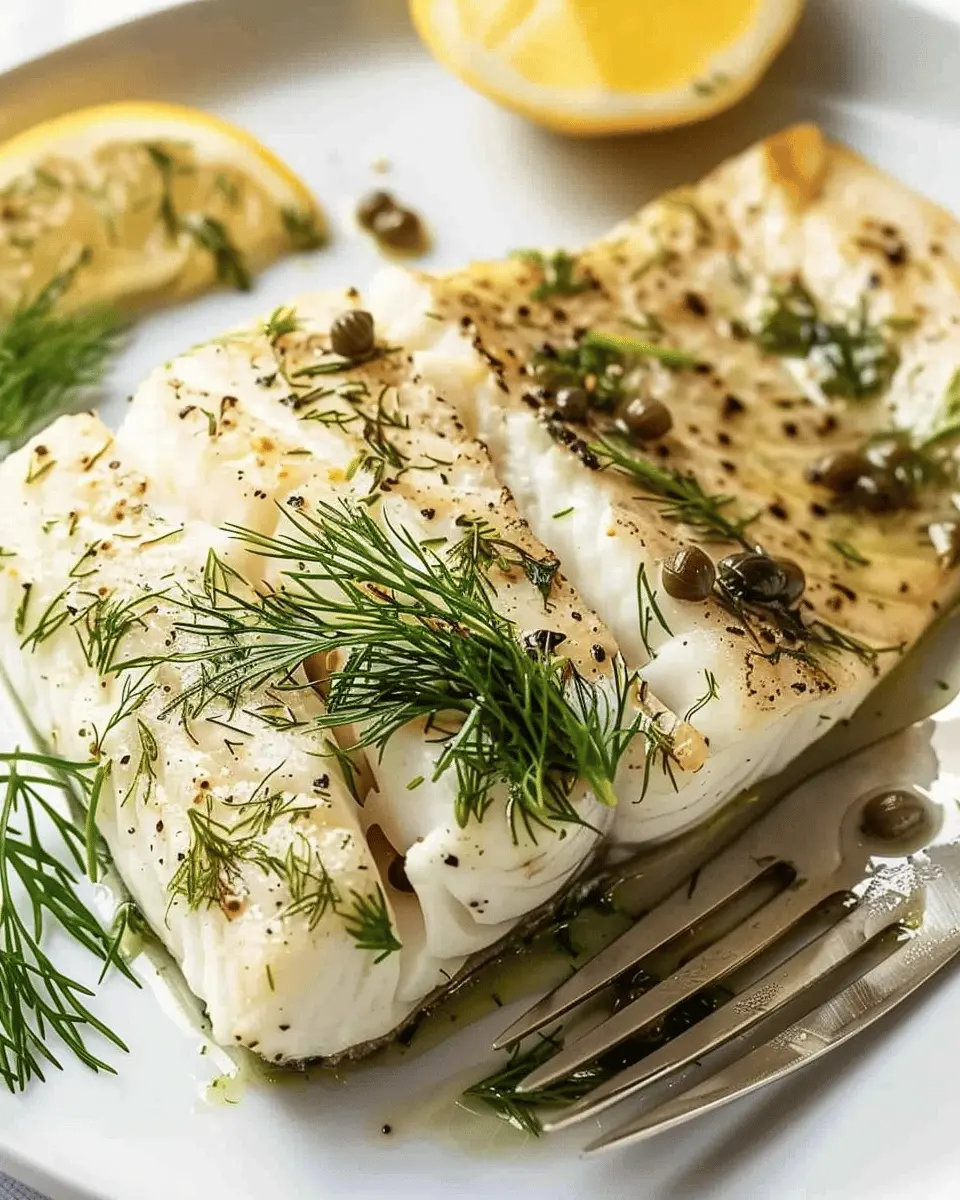
Serving Suggestions for Pan-Seared Halibut
Complementary Side Dishes
Pairing your pan-seared halibut with the right side dishes can elevate your meal from good to exceptional. Consider preparing:
- Garlic Mashed Potatoes: Creamy and buttery, these will provide a comforting base that works beautifully with the halibut.
- Roasted Asparagus: This tender green adds a lovely crunch, while its slight bitterness balances the fish’s buttery texture.
- Quinoa Salad: Light and refreshing, a topping of cherry tomatoes, cucumber, and feta will freshen the palate after each bite.
Feeling adventurous? Check out the benefits of pairing seasonal veggies to take your meal even further.
Creative Garnish Ideas
Don’t underestimate the impact of a well-placed garnish on your pan-seared halibut. Here are a few ideas that are not only visually appealing but also enhance flavor:
- Lemon Zest: Grate some fresh lemon zest over the fish for a burst of citrus.
- Caper Vinaigrette: Drizzle a simple caper vinaigrette for an extra layer of brininess that complements the fish.
- Fresh Dill Sprigs: A few sprigs of fresh dill sprinkled on top provide a beautiful green contrast and invite aromatic undertones.
These thoughtful touches not only brighten up your plate but will impress your dinner guests too!
Time Breakdown for Pan-Seared Halibut
Cooking up a delicious pan-seared halibut with capers and dill is all about making the most of your time in the kitchen. Here’s a quick breakdown to help you plan your meal effortlessly.
Preparation Time
Getting your ingredients prepped is essential for a smooth cooking experience. Expect to spend about 10 minutes chopping, measuring, and organizing everything you need for this delightful dish.
Cooking Time
Once you’re ready, cooking the halibut won’t take long! You’ll be pan-searing it for roughly 15-20 minutes. That’s just enough time to get that perfect golden crust while keeping the fish flaky and tender.
Total Time
By the time you finish, your total time commitment will be around 30 minutes. Cozy up with your freshly made pan-seared halibut, and enjoy this simple yet elegant meal that’s sure to impress!
For more tips on cooking fish effectively, check out this guide from a culinary expert. Happy cooking!
Nutritional Facts for Pan-Seared Halibut
Calories
When savoring a delicious serving of pan-seared halibut, you’re treating yourself to around 200-250 calories. This makes it a fantastic option for dinner, especially if you’re watching your calorie intake without compromising on flavor.
Protein
One of the standout features of pan-seared halibut is its impressive protein content. With approximately 30 grams of protein per serving, it’s an excellent choice for those aiming to build or maintain muscle mass.
Omega-3 Fatty Acids
Don’t overlook the health benefits packed in that flaky fish! Halibut is rich in Omega-3 fatty acids, which are crucial for heart health. Just one serving gives you a good dose of these essential fats that support overall well-being. For more detailed health benefits of Omega-3s, consider checking out resources from the American Heart Association.
Whether you’re meal prepping for the week or cooking for a special occasion, pan-seared halibut with capers and dill is a smart and tasty choice that delights the palate while nourishing your body!
FAQs about Pan-Seared Halibut
Cooking pan-seared halibut is not just about the technique; it’s also about making the most of your ingredients and ensuring a delightful meal every time. Here are some common questions to help elevate your halibut game.
How can I tell when halibut is properly cooked?
The perfect pan-seared halibut should be flaky and opaque. A great rule of thumb is to cook it until it reaches an internal temperature of 145°F (63°C). You can easily check this with an instant-read thermometer. If you don’t have one handy, gently flake the fish with a fork – if it flakes easily but still holds a bit of moisture, you’re right on track!
Can I substitute halibut with other fish?
Absolutely! While halibut is the star of this dish, you can experiment with other mild white fish varieties. Cod, tilapia, or even sea bass can work wonderfully as substitutes. Each type of fish offers a unique flavor profile and texture, so feel free to get creative! Just remember to adjust cooking times, as thinner fillets may cook faster.
What’s the best way to store leftovers?
If you find yourself with leftover pan-seared halibut, you can store it in an airtight container in the fridge for up to three days. To reheat, gently warm it in a skillet over low heat, drizzling a few drops of lemon juice or broth to keep it moist. If you’re looking for more tips on storing fish safely, this guide from the USDA is super helpful.
Whether you’re a seasoned chef or a kitchen newbie, these tips will ensure your pan-seared halibut experience is nothing short of fantastic!
Conclusion on Pan-Seared Halibut
In wrapping up this delightful exploration of pan-seared halibut, we hope you’ll find this dish as satisfying and versatile as we do. Perfectly seared and seasoned with capers and dill, this recipe is a wonderful centerpiece for both intimate dinners and lively gatherings. Not only is halibut a fantastic source of lean protein, but it also pairs beautifully with a variety of sides like roasted vegetables or creamy mashed potatoes.
You can elevate your meal by adding fresh herbs or a squeeze of citrus to brighten the flavors. So, don’t hesitate to get creative. Dive into this culinary adventure, and enjoy every delicious bite!
For more inspiration and tips, check out resources from Seafood Nutrition Partnership and American Heart Association.
PrintPan-Seared Halibut with Capers and Dill: A Simple Delight
Enjoy a simple and delicious pan-seared halibut recipe topped with capers and dill.
- Prep Time: 10 minutes
- Cook Time: 10 minutes
- Total Time: 20 minutes
- Yield: 2 servings 1x
- Category: Seafood
- Method: Pan-Seared
- Cuisine: American
- Diet: Gluten-Free
Ingredients
- 2 fillets halibut
- 2 tablespoons olive oil
- 1 tablespoon capers, rinsed
- 1 tablespoon fresh dill, chopped
- 1 teaspoon lemon juice
- Salt and pepper to taste
Instructions
- Heat olive oil in a skillet over medium-high heat.
- Season halibut fillets with salt and pepper.
- Place halibut in the skillet and cook for about 4-5 minutes on each side until golden brown.
- Remove from heat and top with capers, dill, and lemon juice.
Notes
- Serve immediately for best flavor.
- This dish pairs well with a side of vegetables.
Nutrition
- Serving Size: 1 fillet
- Calories: 350
- Sugar: 1g
- Sodium: 500mg
- Fat: 20g
- Saturated Fat: 3g
- Unsaturated Fat: 15g
- Trans Fat: 0g
- Carbohydrates: 0g
- Fiber: 0g
- Protein: 32g
- Cholesterol: 90mg
Keywords: pan-seared halibut, capers, dill, easy recipe







